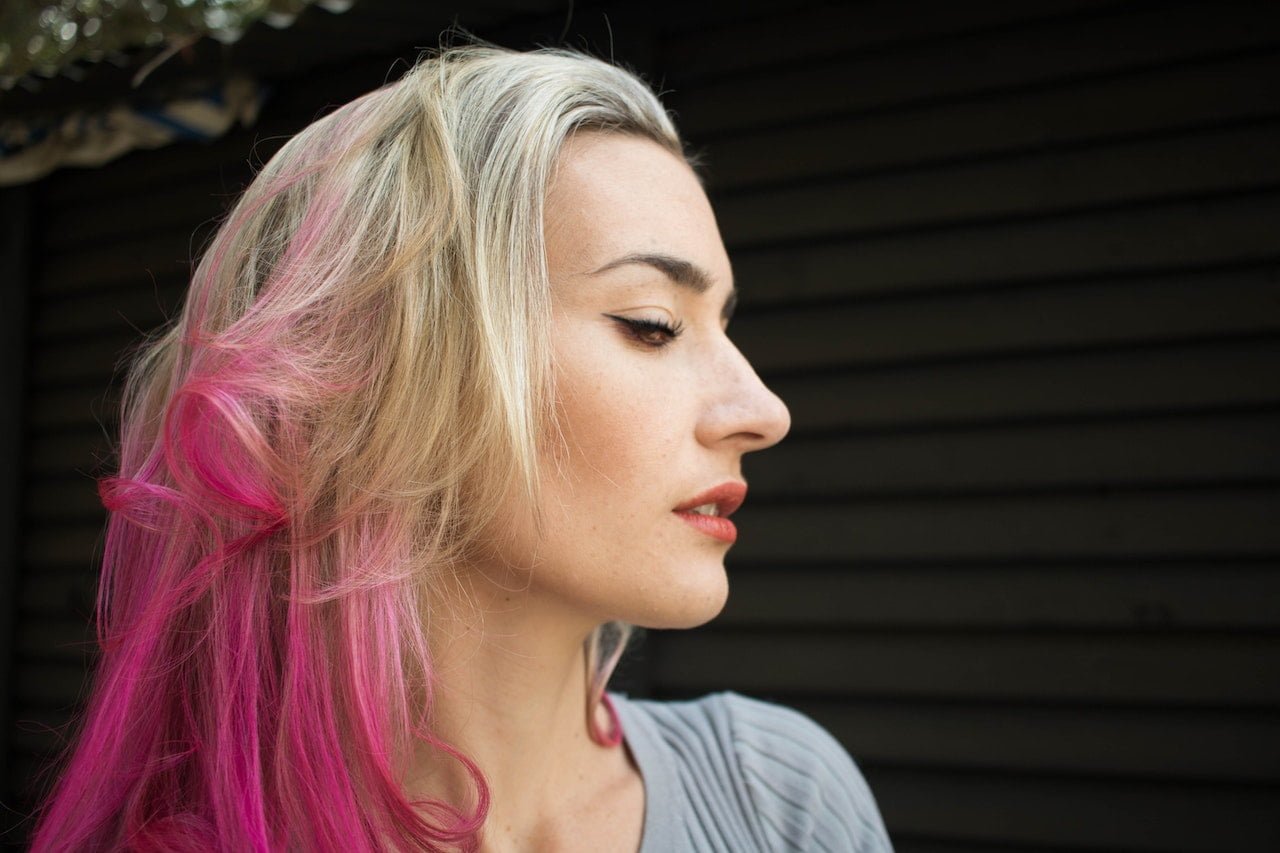Last Updated on: 19th June 2023, 03:49 pm
Hair is so much more than just a bunch of strands on your head. It acts as the crown you wear every day and it can make a world of difference in the way you look.
Choosing your own unique hairstyle that fits your lifestyle, hair texture, and personality can project your disposition to the people around you.
One of the most popular methods of changing your hair is to apply colour to it.
You can choose to colour your hair for a myriad of reasons, such as, to cover up your grey hair, to enhance your current hair colour, or to simply stay on-trend.
However, there are many hair colours that are infused with chemical ingredients such as ammonia and parabens that can be harmful to the body and to the environment.
If you are looking for alternatives and still want to colour your hair, you can choose herbal hair colouring methods that are made of organic ingredients which will be good for you and the environment.
Types of hair colour
There are mainly two types of hair colour and they consist of permanent hair colour or semi-permanent dyes. Permanent hair colour is suitable for long-term application but this means that it uses more chemicals, such as ammonia and hydrogen peroxide to maintain the colour of your hair for longer periods of time. These chemicals can be potentially toxic and produce allergic effects with continuous use.
This makes semi-permanent dyes a better option as they do not have these chemicals which makes them a healthier and better choice. However, you should choose natural hair dyes as they are ammonia-free which makes them suitable for sensitive scalps. Synthetic hair dyes are usually mixed with chemical substances.
How Are Herbal Hair Dyes Made?
Herbal hair colouring or dyes usually come from dried plants, flowers, or leaves. Examples of ingredients used are hennaindigo, aloe vera, amla, hibiscus, guava, reetha, shikakai, tulsi and beet juice.
Once these natural ingredients become dry, they are mashed into powder form or liquidated, and this will act as the base ingredient of the hair dye.
The ingredients are then mixed with hot water to create a dye paste.
This paste is applied to your hair using a comb or a brush to make an even application and cover the hair roots from the tips to the scalp.
Once the application is completed, you can leave it for 2 to 3 hours on the scalp until it completely dries. You can then rinse it with plain water and shampoo as usual.
What Are the Benefits of Herbal Hair Dye?
1) No chemicals
Chemical hair dyes are usually formulated with petrochemicals, ammonia, phthalates, sulfates, PPD, and parabens which makes them detrimental to health.
As one of the most common ingredients in hair dyes, PPD can cause skin irritation and even affect your immune and nervous systems.
On the other hand, Ammonia which is found in plenty of chemical hair colours can trigger respiratory and throat problems.
You might have experienced itching during hair-dying sessions. This is the effect of chemical-based hair dyes.
2) Vegan, cruelty-free, and biodegradable
Most harsh chemicals have been found to cause a negative impact on mother nature. When you wash these toxic chemicals off your hair, they eventually end up in local waterways. the chemicals will end up making their way to the sea which makes them harmful to the marine ecosystems.
Natural hair dye products are vegan, cruelty-free, eco-friendly, and meet environmental standards.
3) Long-lasting
Many people seem to think that herbal hair colouring or natural hair dyes aren’t long-lasting. This is untrue as the active ingredients are all plant-based and the formula will naturally attach to the hair’s outer layer, making it endure for longer periods of time.
If you want the colour to last longer, you can avoid using hot tools such as hairdryers and straightening irons. Use a heat protector if you really need to use one beforehand.
You can avoid taking hot showers or use a water filter that filters colour-fading substances such as heavy metals and chlorine.
4) Good coverage for grey hairs
Look for ingredients that have gudhal, kuth, jatamansi, amla, kattha, henna and coffee in your natural hair dye to colour your hair into a dark hair colour.
As your hair turns grey due to the lack of melanin produced in your hair follicles over time, colouring it a dark hair colour made with natural hair dye can help hide the greys.
5) Excellent nourishment
With ingredients based on organic derivatives, it can provide rich nutrients to your hair, face, and skin which means it can also be used by everyone.
It does not only nourish the outer layer but it delivers the rich nutrients down to the scalp level, making your hair shiny and thick.
If you have hair problems such as dandruff, split ends, hair fall, and other issues, herbal hair dye is an all-natural remedy.
Natural hair dyes containing Reetha can rejuvenate dull and dry hair while Bhringarj can help improve blood circulation.
On the other hand, Shikakai acts as an antioxidant that helps clean your scalp and kill bacteria while the juice of the hibiscus flower can strengthen your hair to help with hair loss and the get rid of dandruff.
What you shouldn’t do with herbal hair colouring?
1) Immediately switch from permanent hair colour to natural hair dye
Before using herbal hair colouring, you need to begin by removing the silicone and other toxic chemicals from your natural hair.
You can do this by using clay masks to remove harsh chemicals on your scalp and you can also wash your hair with a natural shampoo for at least a month.
After you have cleansed your scalp and hair from permanent hair colour residues, you can begin using natural hair dye.
2) Attempting a lighter shade on dark hair
You can only maintain your natural brown, dark brown, or black hair with natural hair colours.
Going for a lighter colour isn’t an option because bleach is the chemical needed to oxidize the melanin molecule of the hair. Natural hair dyes do not contain bleach and only come in darker shades.
3) Using the wrong container to prepare your hair dye
A perfect henna paste is neither too dry nor wet and in order to achieve the perfect formulas, you need to use a glass bowl to avoid oxidization of the powder. Woods or plastic is not recommended because it absorbs the henna dye pigment and this will alter the shades of the hair dye.
4) You must do a skin patch test
Although formulas in natural hair dye do not have harsh chemicals, you can still develop plant allergies.
It is important to do a patch test beforehand by applying a small quantity of henna paste to your forearm and leaving it to completely dry. If you feel any discomfort, rinse immediately! However, if there are no side effects after 48 hours, you can begin colouring your hair with natural hair dye.
How to Choose the Best Herbal Hair Dye
1. Look for organic products
The packaging of the product will usually list all the ingredients used to make it. If it doesn’t, you shouldn’t buy it. Thoroughly go over the list and choose active ingredients that are derived from natural herbal extracts.
Choose hair dyes that are free of PPD, ammonia, hydrogen peroxide, resorcinol, and other synthetic ingredients to avoid irritation of skin, hair, and body.
2. Look for plant-based and eco-friendly products
Plant-based beauty products are often ammonia-free and are better for the environment.
Before purchase, always inspect the label and read peer-reviewed studies that recommend products online to make sure they really are what they claim to be when they say they are plant-based and eco-friendly.
3. Has the hair colour shades you want
The shades of hair dye you choose are important because it synchronizes with your appearance as a whole.
As herbal hair products offer mostly darker shades, you need to make sure they match your skin tone and natural hair colour. For example, if your hair is brown, you can go for a dark brown or black semi-permanent hair colour to change your look up.
There is some henna that is stronger and can lighten your natural hair colour from black to brown if your hair can absorb the shades well. Grey hair can benefit from henna as you can colour it often without worrying about damage to the hair.
An important note is to wipe off any excess colour that gets on your face and neck during application as it can stain. You will need to wash it several times to slowly fade it away.
Conclusion
We are in an era where health is extremely important and we must do everything we can to stay healthy.
On top of using herbal hair colouring, we also recommend using natural products like coconut oil, sesame oil, and argan oil as a conditioner or a hair treatment to boost the effects of the natural hair dye.






